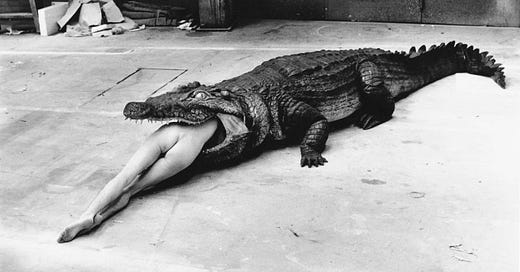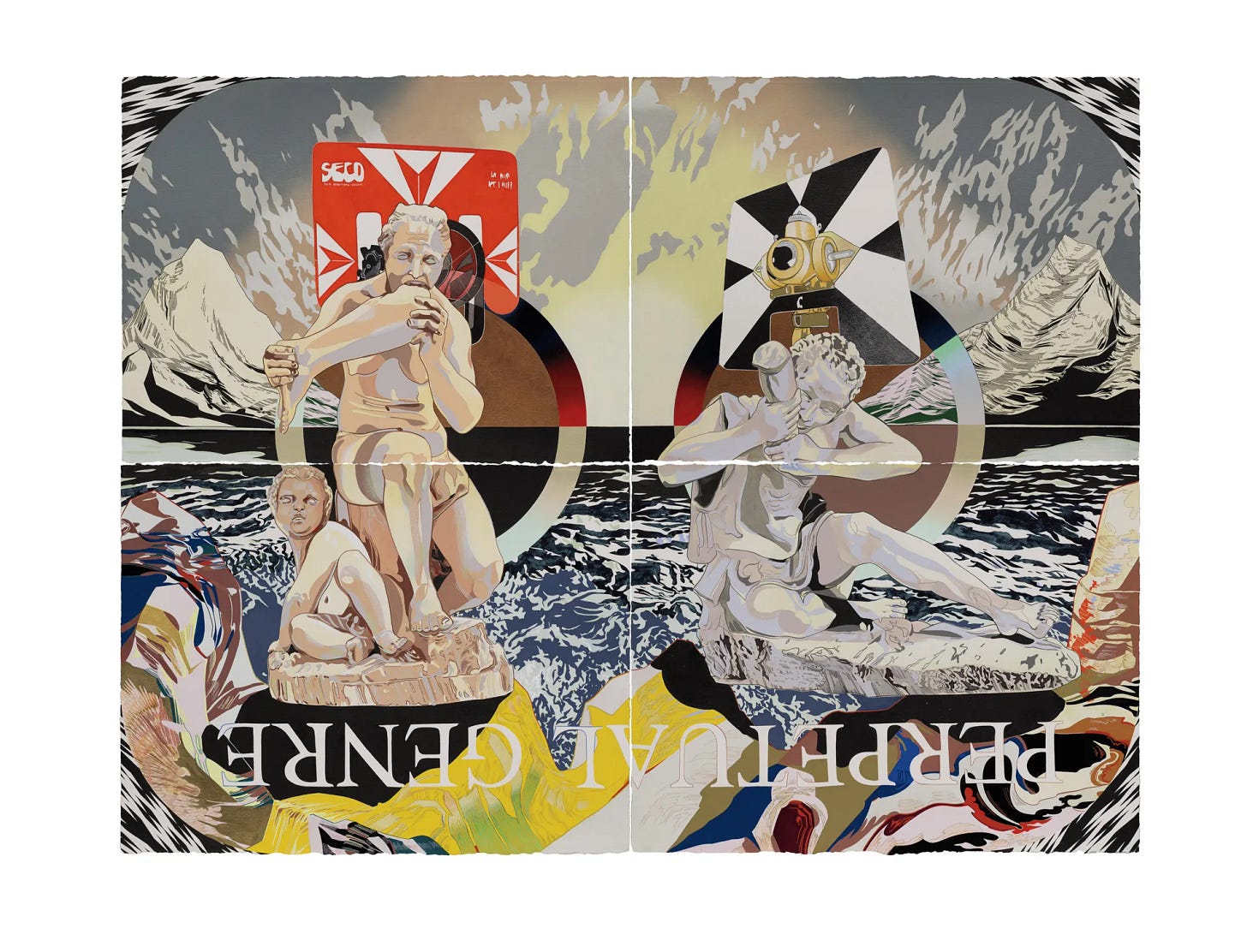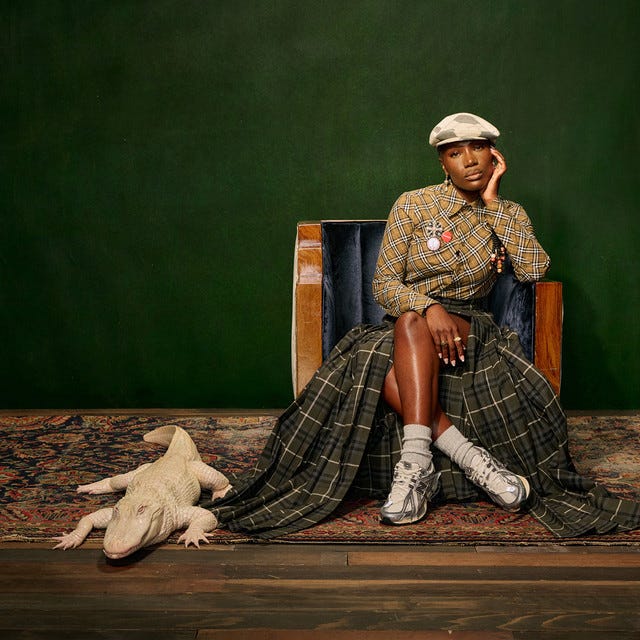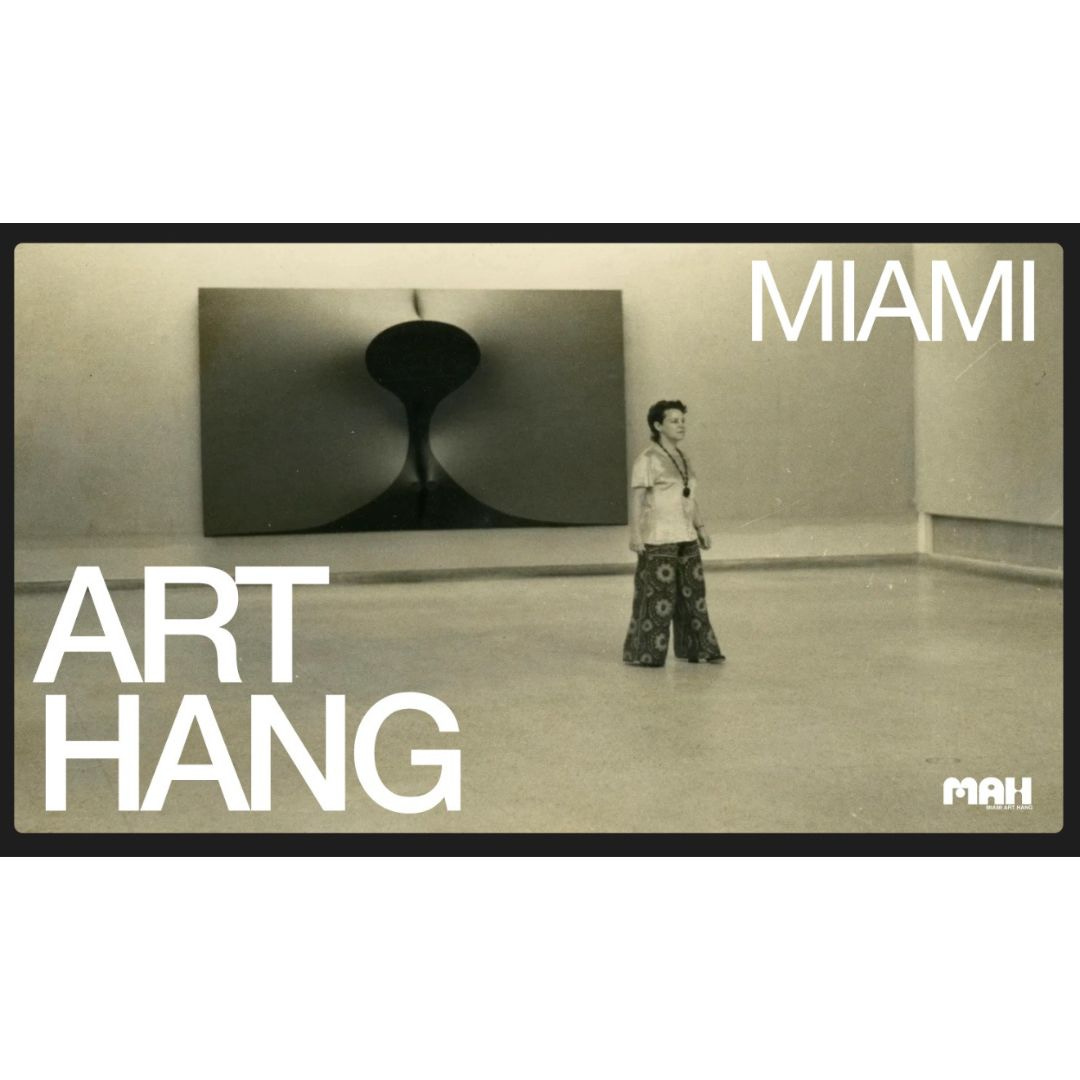Musings on the male gaze, Western art history, and (of course) colonialism
In honor of Women's Day
Andrea Carlson: Perpetual Genre, 2024. Love this summary of her work: “Carlson thinks of the way dominant cultures (usually white U.S. or western European) identify others as “exotic” as a kind of “cultural cannibalism”—sensationalizing in order to objectify and consume them, even as they erase them through assimilation.”
Hi friend,
Like many of you, I have been doing the work of emotional regulation in order to survive this hellish political landscape. I have also been engaging with women artists - some favs and some new discoveries- as I build Miami Art Hang. So let’s get into it: Women’s Day is March 8th, the first reported "Woman's Day" was held in 1909 in New York City. Organized by the Socialist Party of America at the behest of activist Theresa Malkiel, it was rooted in the labor movement. And yet in 2025, labor is not equal, the gender wage gap in the United States means women earn about 83.6% of what men make for the same job. And thanks to our tech bro “government” the rise of “traditional” gender roles, aka the “trad wife” is trending. UGH.
In this newsletter we will talk about some women artists who challenged my notions and beliefs and made me see things anew. Some housekeeping: I won’t release a newsletter just because, I value your time and mine way too much. Rest assured when you get something from me it is because I have been mulling on about a certain subject… My point of departure is this brilliant quote by the always illuminating bel hooks about the white male gaze of Western Art History and why so many women artists were not included in the canon of modern art until recently..
“That gaze which can value him only if he can be seen as part of a continuum of contemporary American art with a genealogy traced through white males: Pollock, de Kooning, Rauschenberg, Twombly, and on to Andy Warhol’
bel hooks on the white colonial gaze
Paul Gauguin, Mahana No Atua (Day of the God), 1894. Here is a glaring example of not only the male gaze in art but also the colonial gaze thrown in for good measure. Gauguin was a creepy French pedophile who preyed on young dark bodies in the French colony of Tahiti and was celebrated in Western Art History as a master...
THE MALE GAZE:
Crocodile Eating Ballerina, Wuppertal, 1983 by Helmut Newton
I just adore that photo from Helmut Newton as a cheeky intro to the idea of “the male gaze” aka an imbalanced gender dynamic with an active/male objectifying (or in this case a phallic- shaped alligator devouring) a passive/female. The term comes from feminist theory and was coined by British film critic Laura Mulvey in a 1975 essay. She said that women in media (and art) often get depicted through a male heterosexual perspective (aka the male gaze) and because of this, they get objectified and sexualized. According to Mulvey the camera (or paint brush) takes on the heterosexual male perspective, and by looking at women through the male gaze you don’t see her as a whole human being but as a sexual object for your viewing pleasure, or in the case of said alligator, a tasty morsel to devour.
The Colonial Gaze and the Other:
Sunshine on a Cannibal, 2015
Andrea Carlson was born in Nebraska and grew up in Minnesota. She attended the University of Minnesota and then the Minneapolis College of Art and Design. Her work addresses the concept of “the Other” and how one culture devours another, cannibalism as a stand in for colonialism. In the work’s horizontal format she also references landscape paintings, another tool of colonialism where the land was depicted as a vast “virgin” territory ripe for Western expansion. The American frontier in landscapes was devoid of Native Americans, making Carlson’s themes of land and de colonial narratives fascinating.
The first painting in this essay, Perpetual Genre, 2024 (see above) is succinctly summarized in perhaps the best art essay I have read all year, written by Jeremy Lybarger for Art News, (it is linked here, read and weep)
“In Perpetual Genre (2024), two boys inspired by a statue from the British Museum’s collection hover below tools used for land surveying. The statue in question is an incomplete 1st- or 2nd-century Roman sculpture of a boy gnawing the arm of his opponent during a game of knucklebones. The piece is informally known as “the cannibal,” and Carlson equates man-eating with colonialism—an analogy reinforced by the painting’s choppy sea, evocative of transatlantic migration.”
Let’s take a moment and explore the confluence of the male gaze and the colonial gaze in reference to Carlson’s work, Gauguin and Newton. Carlson, a female indigenous artist is equating man eating with colonialism, Newton photographed a phallic alligator eating a woman. Patriarchy and colonialism are buddies, let’s just ponder the Trump Musk tech bro boy band and their grotesque neocolonialism as illustrated in the AI generated Gaza Riviera clip. (Reader, I cannot fathom attaching it here, but if you haven’t seen it, take an Alka-Seltzer and search for it in your browser)
But back to Carlson, an Ojibwe artist descended from the Grand Portage Band located in northern Minnesota, in the aforementioned article she is quoted as saying “The museum is a landscape in its own right… It’s trying to be neutral, but most museums are not neutral. What if I make a space outside of that space?” I am going off on a tangent here but we cannot talk about art, patriarchy and colonialism without addressing the role of the museum. The patriarchy spares nobody…
In his writing, art critic Maximilíano Durón in this brilliant piece on the last Venice Biennale questions the histories of museums as institutions. He states, “museums are part of Western colonial projects. It’s a tradition that goes all the way back to the wunderkammern, or cabinets of curiosities, amassed by European aristocracy beginning in the 16th century. A wunderkammer boasted how much its owner had traveled beyond his homeland—and how much he had plundered. Museums in many ways grew out of that. And I’ll add to this lineage the world fairs and international expos that displayed the day’s latest technologies and architectural innovations, while also putting humans, often African and Indigenous people, on display…encyclopedic museums, for all that they have purported to show off the diversity of world cultures, do not show off diversity as we understand it today. Typically, they have had the effect of othering people from the Global South.” Brilliant, but the art history and museums have also erased European women artists from the canon.
One example of a woman artist who only had her first U.S. museum retrospective last year, almost 125 years after her death is Paula Modersohn-Becker.
Another recent trend in art is the “re discovery” of under appreciated women artists like Modersohn Becker (1876- 1907). This brilliant German modernist painter died tragically at 31. Like so many women in 2025 she also struggled with how to balance motherhood, her artistic practice and life in general. Her life and work are proof that not much has changed. The themes of her work are childhood, the experience of motherhood, pregnancy, and old age. Sadly, Modersohn-Becker’s career was cut short after suffering from an embolism 18 days after giving birth to her daughter.
Paula Modersohn-Becker’s ”Self-Portrait on Sixth Wedding (Anniversary) Day” (1906), is thought to be the first nude self portrait by a woman artist. She was 30 when she painted this self-portrait and had moved from her native Germany to live and work in Paris. This was a courageous thing to do for a woman, one of the reasons she has been a feminist icon to many!
Finally, let’s talk about Zilia Sánchez (born Havana, Cuba, 1926), who recently died at age 98. She had to wait until age 92 for her first major retrospective despite having an incredible practice. Her erotic abstractions are meditations on exile, the body, and female sexuality. And the fact that she had no gallery or museum attention until she was in her 90’s meant that she had the bulk of her work in almost destroyed in her San Juan studio when Hurricane Maria hit.
“My works are portraits, but interior ones. They show what I am hiding. I use them to express what is within me; I am not very vocal and use my art to communicate.”
As a queer woman in highly machista Cuba, her mom encouraged her to move abroad. She first lived in Europe and them moved to New York in 1960, the year after Fidel Castro came to power in Cuba. There she worked in theater design during the era when Minimalism was peaking. (Think Donald Judd, Ellsworth Kelly, Agnes Martin, and Carmen Herrera) Though her art could be called minimalist, she was never a part of the movement and often felt alienated. She hated the city, and soon relocated to San Juan, Puerto Rico.
Sanchez often said “Soy isla” (I am an island), a reference to her solitary life (in another fav quote she says “my music is silence”) and practice. As a gay Cuban woman and self-described consummate outsider, an exile, her work defied neat art historical categorizations and while challenging the male gaze.
The charged eroticism in her art make references to female sexual organs and her sexual identity. Always a bit elusive, her themes were hard to pin point, when asked about the reoccurring round shape in her work she said: “this is an egg, it’s the world, and it’s a breast. Three things.”
Lunar con tatuaje (Birthmark with Tattoo), c.1968-1996. Acrylic on stretched canvas.
And so I end this essay with a picture of Sanchez -a petit but mighty woman artist, and Florida-born rapper Doechii and with the hope that in the future we wont need to celebrate “Women’s Day,” because in my book everyday is women’s day! Thank you for being here, I have some big news to share in my next newsletter!
Hasta pronto, thank you for being here…
P.S. I am OBSESSED with Grammy-award winning, Florida-born rapper Doechii aka the Swamp Princess and so should you, she is mad fabulous and mad stylish…watch her tiny desk concert!
xoxo Vero














Another brilliant and necessary read from @VeronicaPesantes—on the male gaze, colonialism, and the women artists who challenge it all. 🔥 A must-read for Women's Day and beyond! #ArtHang #FeministArt #BreakTheGaze"
Fascinating. Thank you for your always insightful perspectives. I learn volumes from you on the regular